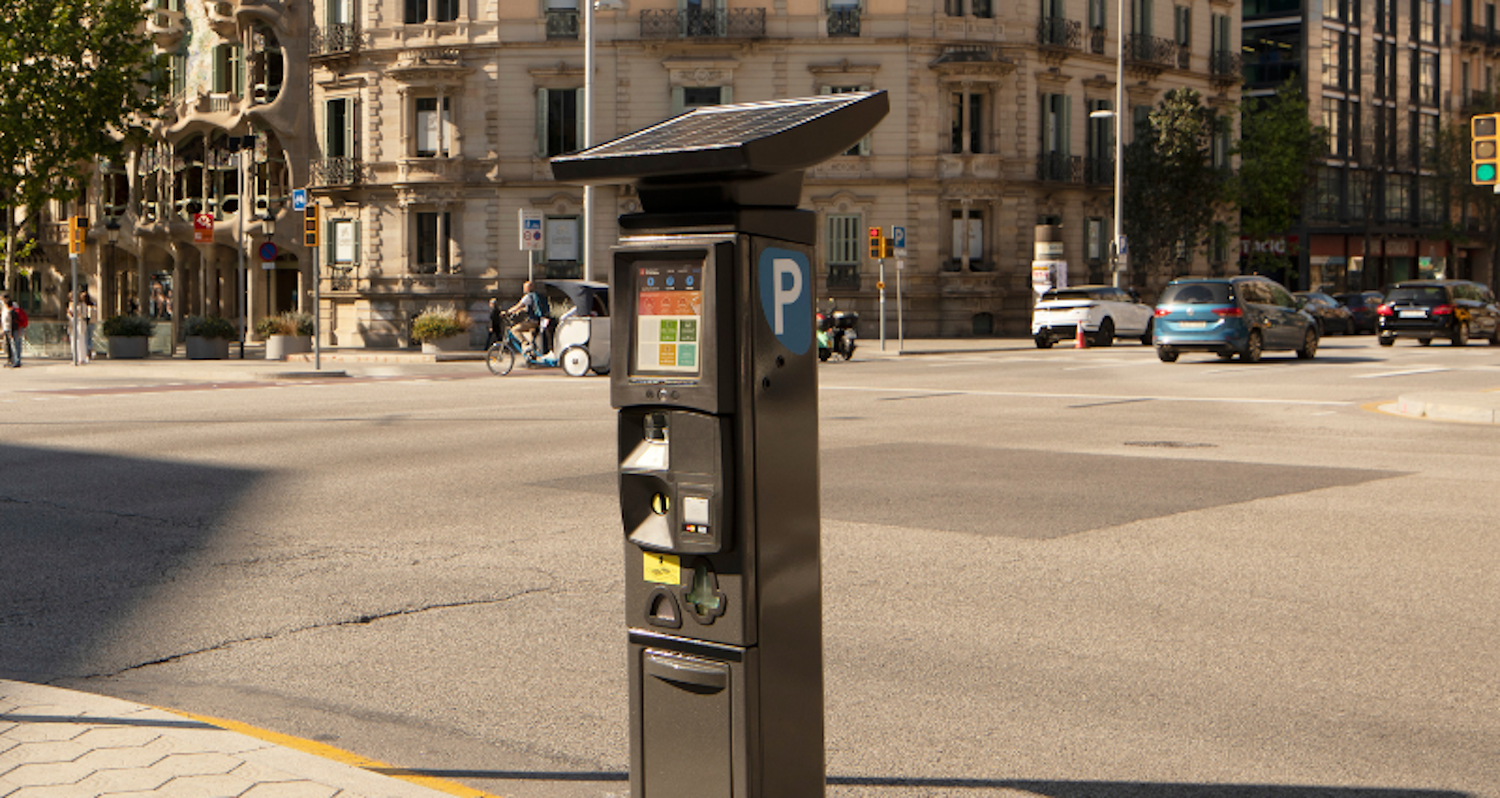Flowbird: Parking Terminals Reimagined
A Smart Way to Reinvent On-Street Parking Technology

Parking terminals used to be a one-hit wonder. When a driver found a parking spot on the street, they’d place coins in a meter in exchange for their stay. If the meter was going to run out, they’d have to run back to refill the meter or risk a ticket.
While the parking terminal did what it was intended to do – handle parking payments – Flowbird has spent the last fifty years pushing the limits on what these devices can achieve for cities. And many cities are already experiencing the improved mobility that comes from reimagining the humble parking terminal.
Old ways of parking can impact a city’s growth
If a city is still relying on coin operated meters, or ticketing kiosks, it may be missing an valuable opportunity to create a better parking and living experience for residents and tourists.
Not all cities have paid parking terminals in enough areas – which could be a loss to the community. When towns and cities don’t have terminals, they aren’t able to monetise their parking spots. Less money in parking means less money towards community needs.
When parking is unmanaged, many cars never leave the place they’re parked. Drivers can end up circling the roads over and over again looking for a free spot. The constant hunt for free parking generates additional pollution and increases the carbon footprint of a city.
Cities that use terminals that only take coins are also at a disadvantage. There’s only one way for drivers to pay. If drivers don’t have coins, they risk a ticket if they need to park. Plus, an attendant needs to collect all the loose coins, which is labour intensive.
Cities with ticket based terminals are limiting their parking potential. While they often accept multiple types of payments, the terminals must be kept full of paper. A technician is needed to stock the paper and look after the machine. It can also be annoying for drivers to have to walk their receipt back to their dashboard.
Cities that only use parking terminals strictly for parking transactions are also missing out. The parking terminal has too much potential to be used only for parking transactions. Once you make the investment in state-of-the art terminals that sit on the streets, it opens up all kinds of opportunities.
They can be an enabler of e-mobility, tourism, and cutting emissions, simply by augmenting the core technology. For instance, Flowbird has worked with cities that have equipped their terminals with telemetry that could measure the air quality on the streets as part of their wider emissions strategy.
Why is it time to look to the future?
You don’t want to invest in new terminals unless it’s of strategic benefit for your city. After all, they’re designed to be a long term investment – with at least a five year lifespan before the technology might need updating. At Flowbird, we commit to maintaining machines for 10 years in our contracts – and we also provide ways of updating existing terminals that don’t require a complete overhaul of the machinery.
That said, from financial to environmental returns, there are several reasons why you might want to consider new, smarter parking terminals for your city:
- No more fuss. By storing licence plate numbers digitally in a cloud, a smart parking terminal can put a stop to the archaic system, which requires people to walk little pieces of paper back to their car. It’s a small thing, but it’s a big relief for any commuter in a rush to the office, or any tourist late to a theatre showing. Plus, their dashboard doesn’t get cluttered with dated parking passes if they are regularly parking in the city.
- Easier payments. Card, cash, mobile, or app payments are all options with smart terminals. Registered licence plates can even be recalled, speeding up payment processes. And if a driver does get a fine, rather than pulling up their mobile browser and typing in a long url, they could walk to the kiosk and pay the fine there.
- Reward driver behaviours. When the terminal is capable of recognising EV vehicles, a city can offer discounted rates on parking for EV drivers – encouraging more of their citizens to switch to electric.
- Stay inclusive and accessible. An updated terminal also allows cities to create a more inclusive and accessible travel experience, no matter the level of ability of the traveller. Heights of machines, certain shades of colours, or the angle or position of the screen can all impact the user experience. It’s important for any terminal provider to meet regulation standards.
- Reduce emissions through solar powered terminals. Not only does this help cities reduce their carbon footprint, it also makes money more efficiently for its community.
A parking terminal is no longer just a terminal
When used to its full potential, a parking terminal can be a vital part of a thriving city ecosystem. On-street technology is an important piece of a city’s wider mobility puzzle. By wider infrastructure, we mean:
By connecting state-of-the-art parking terminals with MaaS and other technologies, cities can create a more inclusive, seamless and accessible experience for locals and tourists, all while reducing the community’s emissions.
Here’s how an interconnected strategy can take terminals from a small part of your mobility strategy, to a major contributor:
- On each terminal, cities can advertise for events with interactive screens. It can also increase city revenue via event ticket sales, like festivals, movies and sports. Event-goers can also print out their ticket in case their phone has a low battery, or as a back-up.
- Cities are able to use cameras to scan licence plate numbers and issue tickets quickly, rather than employing someone to hand out tickets and check for receipts on dashboards.
- At park-and-ride terminals, parking fares or bus fares are adjustable to more affordable prices, incentivizing sustainable travel. This could include free parking during rush hour times to reduce traffic congestion.
- Fares can be quickly and easily adjusted throughout the city, incentivising specific kinds of travel, and specific travel times. All of which helps ensure free parking only happens when a city wants it to.
- Parking kiosks with combined or extra ticketing options can also help reduce lines and foot traffic at events. Purchasing a ticket ahead of time together with the parking fare means more people walk straight into the game, tourist event or museum without standing in line to buy tickets.
- If a city already has innovative terminals on the street, they’ll have a head start to rolling out future mobility technology. For example, if you later need to roll out a new e-mobility plan, EV charging stations can be connected to your current parking terminals, saving on payment infrastructure.
The first step towards smarter terminals – understand the city’s needs
Each city is unique. What’s good for one city isn’t necessarily good for another. That’s why the first step when partnering with mobility experts like Flowbird is to determine the city’s unique needs and how the parking terminal fits into the wider strategy.
Want to see smart parking terminals in action? Check out our case study of Como, Italy that uses multi service kiosks as an infrastructure solution. Or, learn about our compact upgrade kit for existing terminals.
About Flowbird
 Flowbird solutions are used in 4,350 cities in 80 countries to make journeys effortless.
Flowbird solutions are used in 4,350 cities in 80 countries to make journeys effortless.
Our relentless desire to enable mobility, through frictionless technology, which gives back time to us all, is the driving force behind our innovations. We are dedicated to complete, data-led solutions, which can be used to inform mobility policy and make a positive impact.



Comments
There are no comments yet for this item
Join the discussion